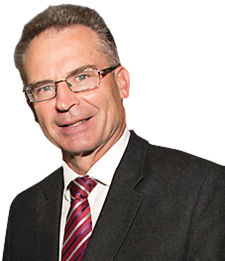THE decision by Yass Council to apply a five-kilometre, no-housing zone around the ACT is very odd to say the least. The council has exempted the proposed Riverview incursion into NSW, west of Belconnen, from the ban but all areas adjacent to Gungahlin are included.

It is unclear to me why a relatively small entity like the Yass Council would deliberately turn its back on the large and risk-free rates base that residential development against the ACT border would guarantee. Queanbeyan Council has exhibited no such coyness as the developments at Jerrabomberra, Googong and, most lately, Tralee illustrate.
These developments have been largely driven by people working in Canberra, a majority of whose children attend school in Canberra and whose families’ health needs are met by services within the ACT. For example, cross-border students make up roughly 10 per cent, or more than 5000, enrolments in ACT schools and 25 per cent of acute health care patients in the ACT live in the Greater Southern Area Health Service boundaries.
The fact is, as the major analytical and modelling work done by the ACT Treasury as part of the “2012 Taxation Review” reveals (pages 40-41), the cost of cross-border development currently falls disproportionately on the ACT government and the major economic benefit accrues first to the relevant council area and secondly the NSW government.
As far as Yass Council is concerned, residential development in NSW abutting Mulligans Flat would represent buckets of money for relatively little outlay. What possible reason, therefore, could there be for this strange decision?
Yass Council, of course, covers good Liberal/National Party country but heaven forbid the prospect of a few thousand pinko-leftie Canberrans moving into the electorate in search of affordable housing has the number crunchers in the party so worried that they would sacrifice a guaranteed financial bonanza.
Accepting that many people choose to live in places outside of Canberra for a variety of lifestyle reasons, there is no argument that increasing numbers are moving across the border in search of affordable land and housing.
The massive reduction in the supply of land for detached housing in the ACT and the consequential explosion in the price of such housing was identified by ACT Treasury as the principal driver for people moving. It is clear to see at Bungendore, Collector, Murrumbateman and even at Yass itself and in Goulburn how the market has, as it always will, responded to the reduction in the supply of land in Canberra.
There are currently about 30,000 people a day crossing from NSW into the ACT for work and school and these numbers will continue to grow, especially in the face of the current land release and housing policies of the ACT government.
In the taxation report ACT Treasury also advised: “Land supply constraints are expected to have significant adverse impacts for the ACT economy.”
“Analysis confirms that development of the surrounding region has benefits for the territory’s economy, and to the extent possible, the ACT should support developments in the region. This should not, however, be at the expense of growth in the territory as there would be a net fiscal cost.
“To the extent possible, considerations of availability of land and housing affordability should be equalised for households making locational choices between the ACT and its surrounding region.”
In concluding its analysis of the extent to which land is an important foundation for economic activity and future taxation revenue, the Treasury undertook a detailed examination of the stock of developable land in the ACT. Treasury found that the Territory Plan identified 5600 hectares of land that could be used as future urban areas in the short to medium term. It determined that that land had the capacity to support about 48,300 new residential dwellings or about 70 years of residential dwelling supply.
Treasury further determined that land within existing urban areas could be redeveloped to higher use to provide an additional 61,000 additional dwellings. An estimated 160 hectares of existing unleased land within current developable urban areas was also identified.
Treasury concluded: “Aggregating the various types of developable land provides an estimated total future capacity of around 153,000 dwellings for land outside the current urban areas.
“Based on current population forecasts and a government policy of 50 per cent of residential dwelling demand being met from infill, this represents around double the current number of dwellings available within the ACT, and provides capacity for around 100 years of population growth.”
In light of this advice from the ACT Treasury, why, oh why, are we drip feeding the supply of land for detached houses so as to only meet the needs of the privileged middle and upper middle class?
There are, I am sure, thousands of working-class Canberra families who have lost confidence in the ACT government ever responding to their housing needs who are praying for the Yass Council to change its decision. In the absence of that they will be willing the CSIRO to fast track its planned housing estate in North Belconnen.
Who can be trusted?
In a world of spin and confusion, there’s never been a more important time to support independent journalism in Canberra.
If you trust our work online and want to enforce the power of independent voices, I invite you to make a small contribution.
Every dollar of support is invested back into our journalism to help keep citynews.com.au strong and free.
Thank you,
Ian Meikle, editor




Leave a Reply